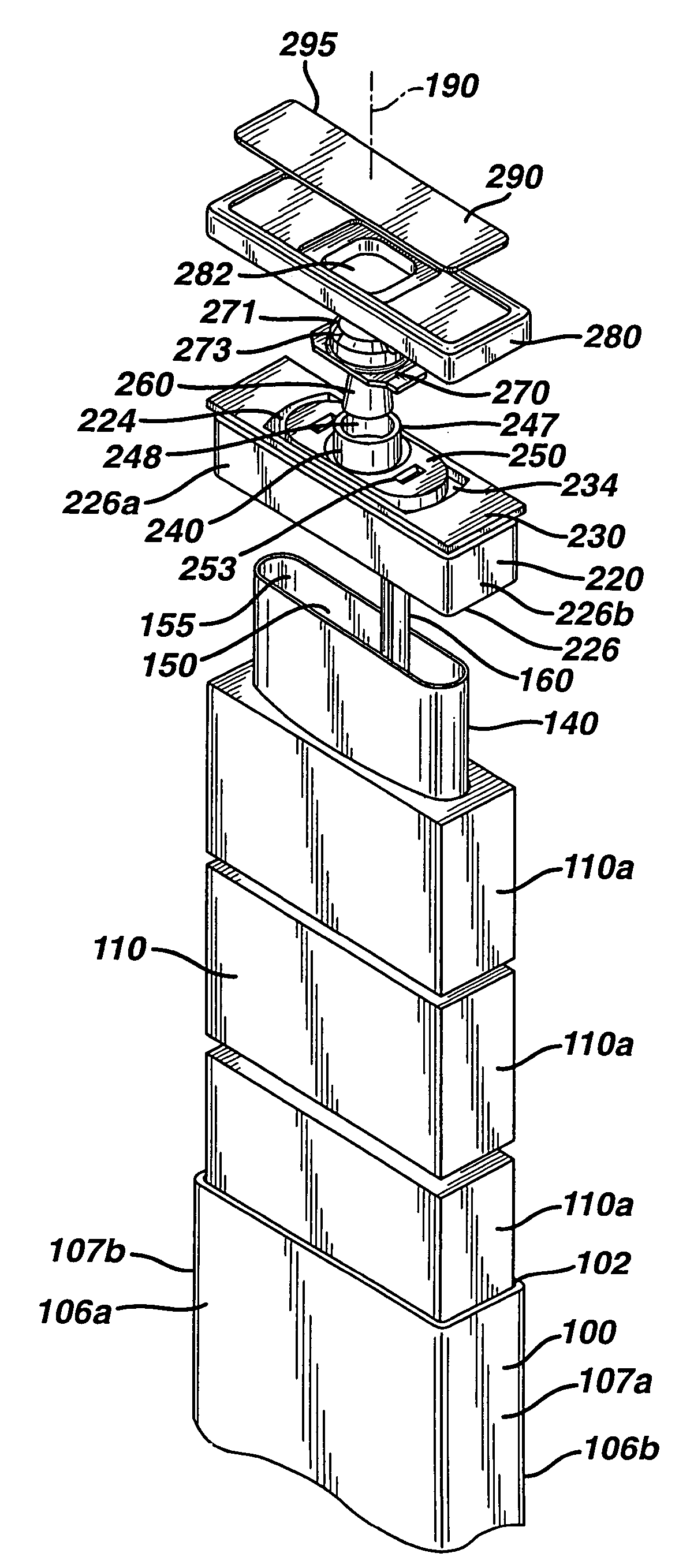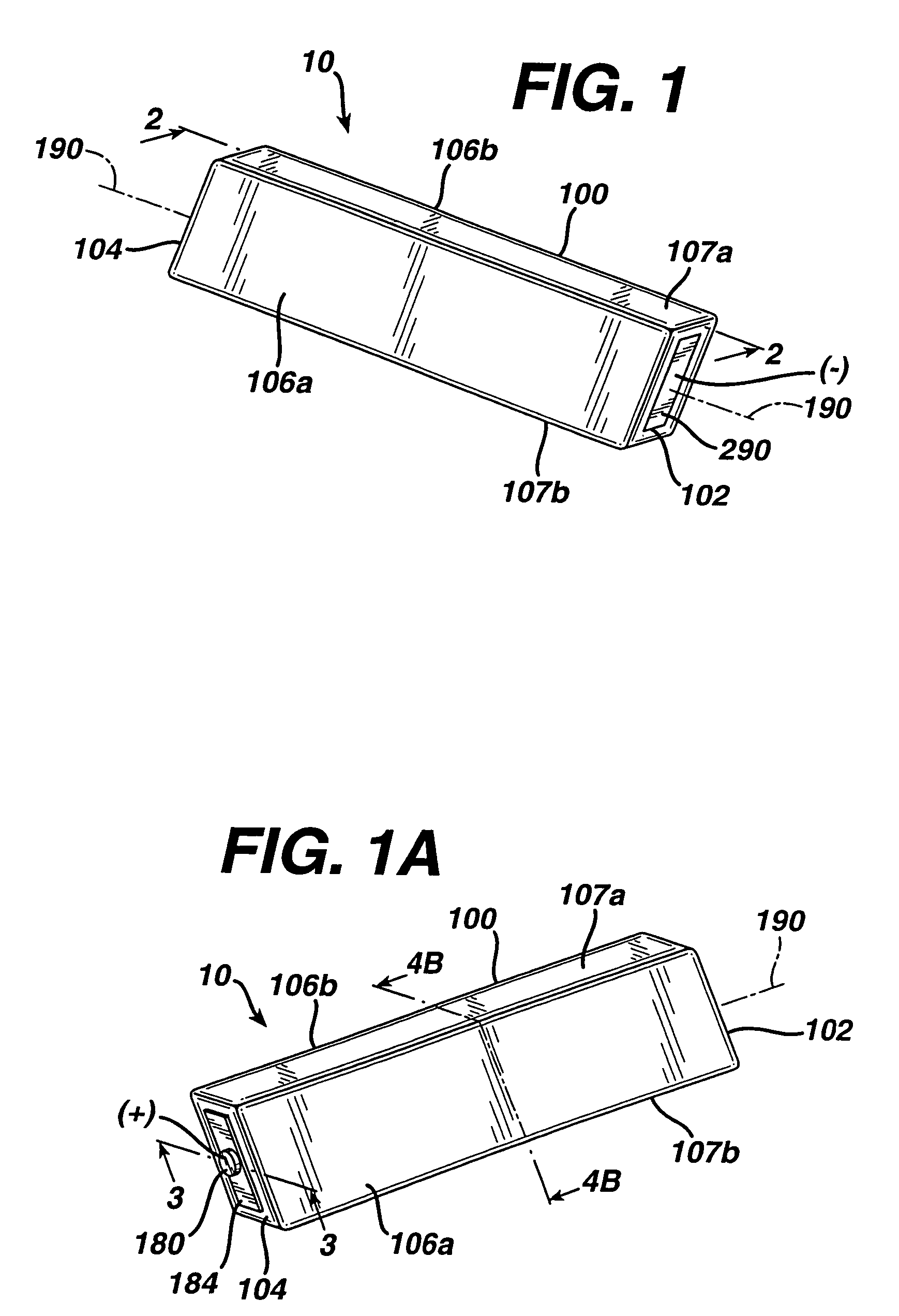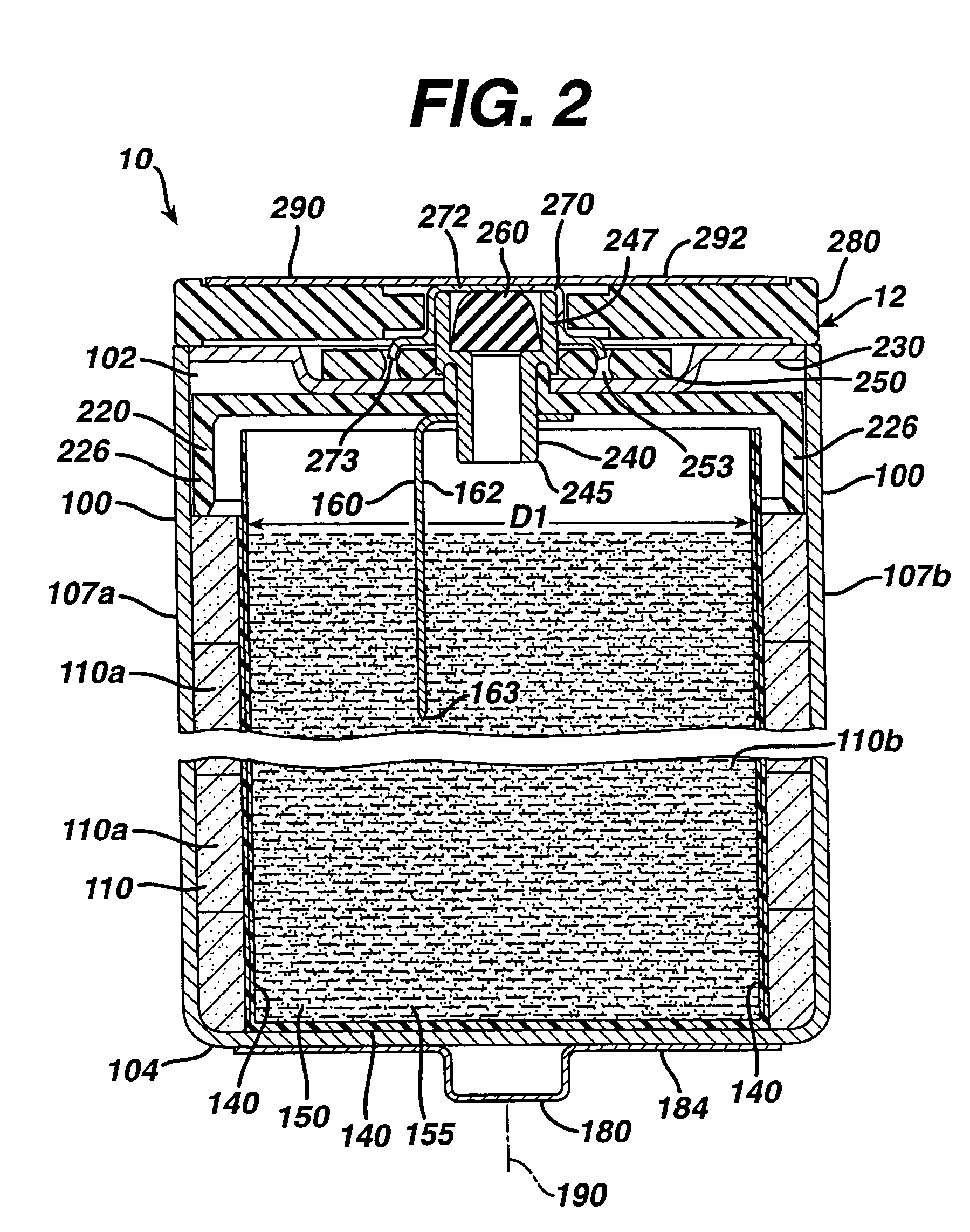Alkaline cell with flat housing
- Summary
- Abstract
- Description
- Claims
- Application Information
AI Technical Summary
Benefits of technology
Problems solved by technology
Method used
Image
Examples
example 1 (
WEAK WELD USING Nd:Yag LASER)
[0098]The weak weld used to weld metal cover 230 to casing 100 along casing edge 106c (FIG. 6 or 6A) can be produced by employing an Nd:Yag laser. The laser is operated at a frequency of about 100 Hertz. The peak power output per pulse is about 35 Watts. The average power output is 0.5 Killiwatts. The pulse width (cycle time between peak power) is about 0.7 millisecond. The laser feed rate (rate of movement of the laser along weld path) is about 3 inches per minute. A uniform weld along long edge 106c of the casing is produced thereby welding abutting long edge 230a of metal cover 230 thereto. The weld had a uniform depth of penetration between about of 2 and 4 mils (0.0508 and 0.102 mm), typically about 3 mil (0.0762 mm). The weld cracks when pressure within the cell reaches a level of between about 400 and 800 psig (2757×103 and 5515×103 pascal gage) and thereby functions as a supplemental vent should the operation of primary vent (plug 260) become com...
example 2 (
STRONG WELD USING Nd:Yag LASER)
[0099]The strong weld used to weld metal cover 230 to casing 100 along casing edges 106d, 107c and 107d (FIG. 6 or 6A) can be produced by employing an Nd:Yag laser. The strong weld used to weld metal cover 230 to casing 100 along casing edge 106d, 107c and 107d can be produced by employing an Nd:Yag laser. The laser is operated at a frequency of about 12 Hertz. The peak power output per pulse is about 46 Watts. The average power output is 0.65 Killiwatts. The pulse width (cycle time between peak power) is about 5.9 millisecond. The laser feed rate (rate of movement of the laser along weld path) is about 2 inches per minute. A uniform weld along long edges 106d, 107c, and 107d of the casing is produced thereby welding abutting edges of metal cover 230 thereto as shown in FIG. 6. The weld had a uniform depth of penetration of between about 5 and 7 mils (0.127 and 0.178 mm), typically about 6 mil 0.152 mm). The weld cracks when pressure within the cell re...
PUM
| Property | Measurement | Unit |
|---|---|---|
| Thickness | aaaaa | aaaaa |
| Thickness | aaaaa | aaaaa |
| Thickness | aaaaa | aaaaa |
Abstract
Description
Claims
Application Information
 Login to view more
Login to view more - R&D Engineer
- R&D Manager
- IP Professional
- Industry Leading Data Capabilities
- Powerful AI technology
- Patent DNA Extraction
Browse by: Latest US Patents, China's latest patents, Technical Efficacy Thesaurus, Application Domain, Technology Topic.
© 2024 PatSnap. All rights reserved.Legal|Privacy policy|Modern Slavery Act Transparency Statement|Sitemap



